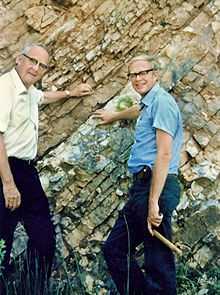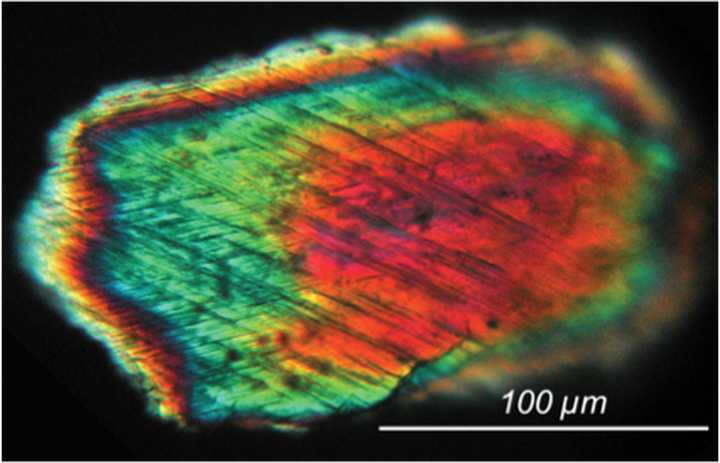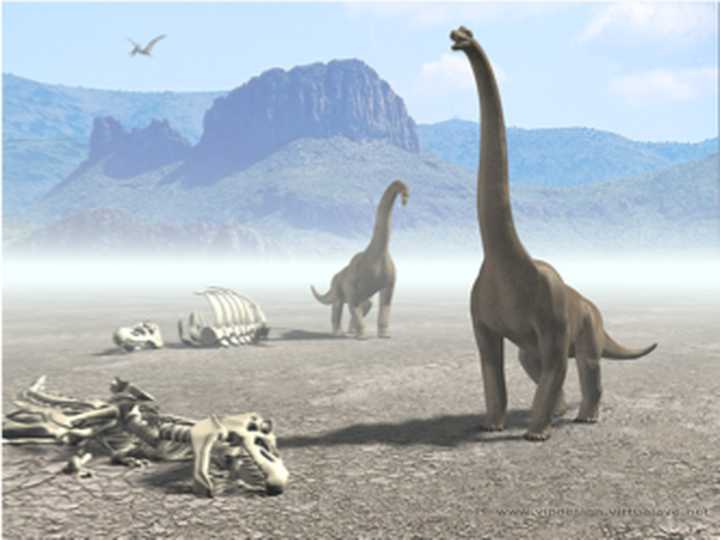In 1980, physicists Luis Walter Alvarez and son Walter Alvarez, both of whom won the Nobel Prize in physics, have found that iridium levels are 20 to 160 times higher than those found in the Earth’s crust at the boundary between the Cretaceous and Paleogene substrata worldwide.

Iridium is not uncommon on earth, but most of it sank into the Earth’s core during its formation, so it is rare in the Earth’s crust. But Iridium is common in asteroids in space. So they concluded that at the turn of the Cretaceous and Paleogene, an asteroid hit the earth.

Soon, more evidence of meteorite impacts began to emerge. At the cretaceous-paleogene boundary, for example, a lot of impact quartz has been found (pictured below) . This internally deformed ore requires tremendous pressure (such as a nuclear explosion or a meteorite strike) to form. Then, a huge crater 180 km in diameter was found in Yucatán Peninsula, Mexico. The submerged crater is a perfect match for the predicted impact. At this point, the end of the Cretaceous meteorite impact hypothesis has been confirmed.

In addition, paleontologists have found a layer of burning soot at the boundary between Cretaceous and Paleogene strata around the world. That means global wildfires.
Let’s imagine what happened on the day of the meteorite’s arrival. When the meteorite, about 10 kilometers in diameter, fell into the sea, the intense heat vaporized everything around it. Rocks in the Earth’s crust are melted and thrown high into the air. The shock wave and tsunami with a 100 meter wave quickly killed all plants and animals within 1,000 kilometers of the meteorite. Pieces of lava break out of the atmosphere, circle the earth and return to the atmosphere. A few hours later, they created a firestorm that covered the entire planet. The entire surface of the Earth is a fiery inferno. Fires have burned vegetation all over the world, killing animals that have nowhere to hide. By this time, 70% of all life on Earth was dead.
The survivors face a series of severe tests. First, six to eight months of darkness. Massive amounts of dust shoot up into the stratosphere, spreading across the globe and blocking out the sun. Plants that depend on photosynthesis die off. The second is acid rain. The Yucatán Peninsula is a terrible place to land meteorites, because there’s a lot of sulfur in the strata. The impact of the meteorite produced large amounts of sulfur dioxide, which caused persistent acid rain around the globe and, once again, the death of the remaining plants. The food chain is completely broken. Herbivores and carnivores have been decimated.
The final blow is global warming. Meteorites also release large amounts of carbon dioxide from the Earth’s crust. After the winter passed, a strong greenhouse effect began, causing the temperature to rise quickly by 20 degrees. This time, global warming lasted for hundreds of years. The result is a complete collapse of the ecosystem. Most of the Earth has become a desert. By this time, the dinosaurs were completely extinct.





 Account not verified
Account not verified